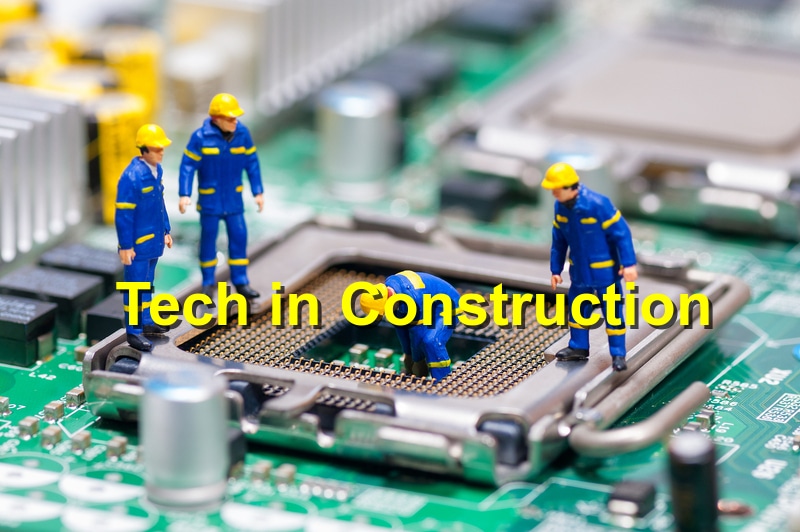Technology has rapidly reshaped the commercial construction industry, changing how projects are designed, managed, and delivered. From digital project management tools to advanced robotics, construction firms are leveraging innovations that make operations more efficient, reduce costs, and improve safety. As the industry continues to evolve, embracing technology is no longer optional—it’s essential for staying competitive and delivering projects on time and within budget.
1. Building Information Modeling (BIM): Enhancing Collaboration
Building Information Modeling (BIM) has become a cornerstone of modern construction. It enables architects, engineers, and contractors to work on a shared 3D model, improving collaboration and reducing costly errors.
Through BIM, project teams can identify potential conflicts before construction begins, saving both time and resources. The technology also allows for better visualization, helping clients and stakeholders understand project progress and design details more clearly.
Key benefit: BIM reduces rework and enhances coordination, ensuring smoother communication across all stages of the project.
2. Drones and Aerial Imaging: Improving Accuracy and Safety
Drones have revolutionized how construction sites are monitored and managed. They provide high-resolution aerial imagery, allowing project managers to track progress, assess site conditions, and detect safety hazards in real-time.
Beyond safety and efficiency, drones also help gather accurate topographical data, which can be integrated into digital models for better planning and layout precision. This eliminates the need for time-consuming manual surveys and increases productivity on large commercial projects.
Key benefit: Drones improve data accuracy, enhance safety, and speed up project assessments.
3. AI and Machine Learning: Smarter Decision-Making
Artificial Intelligence (AI) and machine learning are enabling smarter decision-making throughout the construction process. AI-powered systems can analyze vast amounts of project data—identifying risks, predicting delays, and recommending cost-saving strategies.
For example, AI can forecast material needs, optimize resource allocation, and even help with preventative maintenance by predicting when equipment might fail. This level of data-driven insight empowers managers to make proactive decisions that keep projects on schedule and under budget.
Key benefit: AI enhances planning accuracy and minimizes risks through predictive analytics.
4. Robotics and Automation: Boosting Efficiency
Automation and robotics are transforming labor-intensive tasks such as bricklaying, concrete pouring, and welding. These technologies not only increase precision but also speed up repetitive processes, allowing workers to focus on more skilled and creative tasks.
Robotic systems can also improve safety by performing dangerous operations in high-risk environments, reducing the likelihood of workplace injuries.
Key benefit: Robotics increases productivity while ensuring worker safety and project consistency.
5. Virtual Reality (VR) and Augmented Reality (AR): Enhancing Visualization
Virtual and augmented reality tools are becoming valuable assets in commercial construction. VR enables stakeholders to “walk through” a project before it’s built, helping them visualize spaces, identify design flaws, and make informed adjustments early in the design phase.
Meanwhile, AR overlays digital information on physical environments—helping workers follow precise installation instructions or visualize structural elements behind walls.
Key benefit: VR and AR improve design accuracy and streamline client approvals.
6. Sustainable and Smart Technologies: Building for the Future
Sustainability remains a key focus in commercial construction, and technology plays a major role in achieving eco-friendly goals. Smart sensors and IoT (Internet of Things) devices monitor energy use, lighting, and temperature to optimize building performance.
Additionally, advanced materials such as self-healing concrete and energy-efficient insulation are reducing environmental impact while extending building lifespans.
Key benefit: Technology-driven sustainability improves efficiency, lowers costs, and aligns with green building standards.
7. Cloud-Based Project Management: Real-Time Collaboration
Cloud-based software solutions have made communication and file sharing seamless. Project managers, contractors, and clients can access up-to-date information from anywhere, ensuring transparency and accountability across all phases of construction.
This technology enables real-time updates, automatic documentation, and efficient coordination among multiple teams—especially on large-scale commercial projects with numerous stakeholders.
Key benefit: Cloud tools streamline project management and improve team coordination.
Conclusion
The impact of technology on commercial construction is undeniable. From AI and automation to VR and cloud collaboration, these innovations are transforming every aspect of the industry. They’re not just tools—they’re powerful enablers of smarter, safer, and more sustainable building practices.
As we move deeper into 2025 and beyond, embracing these advancements will be key for contractors and developers aiming to deliver high-quality projects efficiently. The future of commercial construction is digital, data-driven, and full of opportunity for those ready to innovate.
References: CCR Mag, Empire Building




